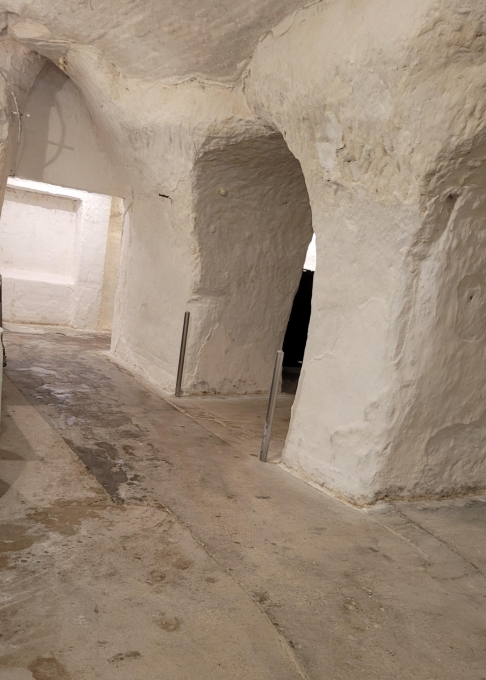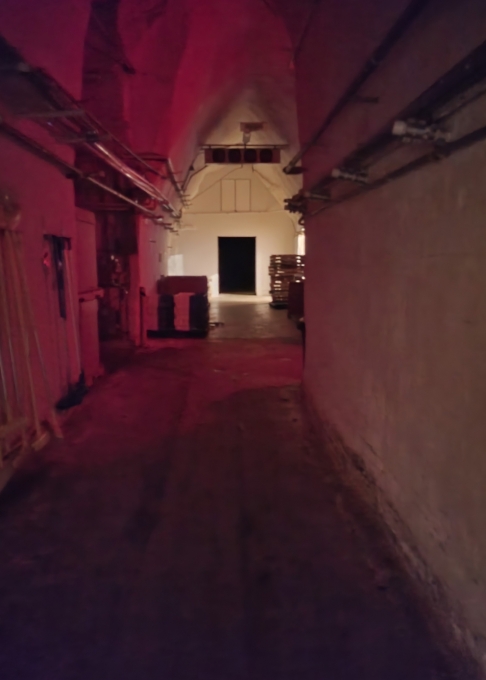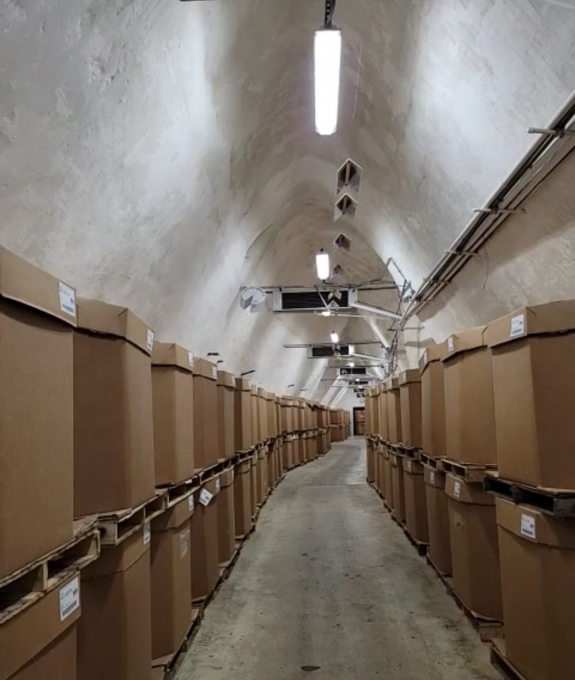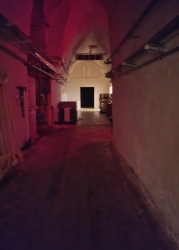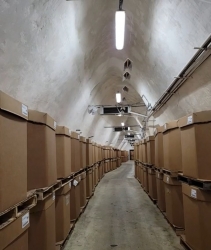An Exploration of the Caves
April 19 2024
Whether you’re new to our brand or a long-time friend, you’ve probably noticed we are pretty passionate about our cave-aging process. (After all, it’s in our name!) Most recently, we even made our caves the star on our redesigned packaging, highlighting the important role they play in the making and aging of our one-of-a-kind cheeses. So what’s so fascinating about them? We asked Affinage & Warehouse Manager Tara Schaal to lift the veil on the what goes on inside those majestic bluffs and how it translates into great tasting cheese.
Let’s go Exploring
There are 13 caves currently in operation at Caves of Faribault, and their size may surprise you. According to Tara, the caves go back roughly two city blocks from the edge of the bluff, and they are about two and a half city blocks wide from end to end. They operate about 160 feet below the ground surface. And yet, due to their ceilings that stretch up to 16 feet tall at the peak, there isn’t any sense of claustrophobia – quite the opposite, actually, for the caves seem to give off a sense of grand ambiance.
A Natural Wonder
The perfect temperature. The ideal humidity. These are the two unspoken ingredients you won’t find listed on the packaging, but they are crucial to the creation of our award-winning line of cheeses. Their balance derives from the natural sandstone, present since the last glacial age, from which the caves were formed two centuries ago. St. Peter sandstone, indigenous to the Midwest, was named by American geologist David Dale Owen after the Minnesota River, which was then known as the St. Peter River. It is comprised of quartz sand that is predominantly silica. (Little did Owen know his naming convention would live on through our premium St. Pete’s Select® brand.)
Why is this sandstone so special? It allows water to travel both horizontally and vertically through its walls, and has a natural capacity for absorption. This environmentally idyllic setting is what allows our cheeses to thrive during their aging and maturing process. “Sandstone is unique because it has a memory and can absorb things for years,” notes Tara.
Igniting the Senses
So what is it like to work in the caves? Tara describes the experience as “serene, charming, awe-inspiring and soothing.” While their grandeur is a sight to behold, their presence will also ignite your sense of smell. “The smell of the caves depends on what cave you enter,” explains Tara. “Some are pungent; some are fairly mellow.” What most have in common is the pleasantly earthy smell of rain, known as “petrichor.” Petrichor comes from the Greek “petra” meaning “stone,” and “ichor”, which in Greek mythology describes “the golden fluid that flows in the veins of the immortals.” We find that description fitting for our wonderous caves, whose walls in essence provide the lifeblood needed for a successful affinage.
While only some will have the honor of experiencing these sights and smells firsthand, we are thrilled to offer an extraordinary line of handmade, cave-aged cheeses that all cheese lovers can experience through taste. These earthy notes are present in each bite of our award-winning products, so the next time you indulge, you can be reminded of the magic happening underground that made it all possible.

